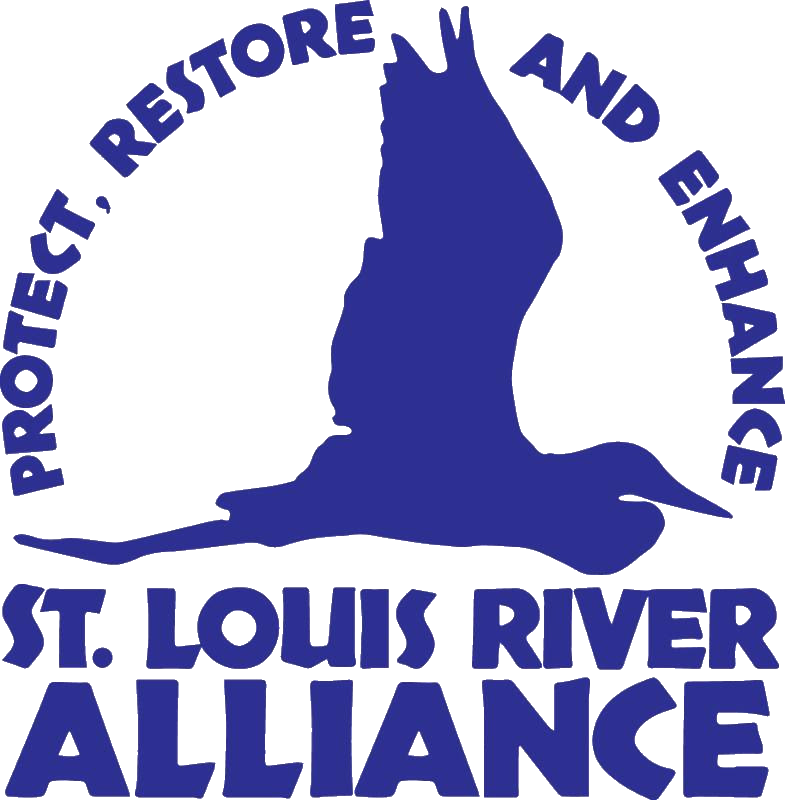St. Louis River Area of Concern Update: Kingsbury Bay/Grassy Point project completed!
Kingsbury Bay/Grassy Point project in St. Louis River Estuary completed
October 18, 2021
One of Minnesota DNR’s largest habitat restoration projects is complete. The three-year, $18 million construction project in the St. Louis River estuary near Duluth has restored 230 acres of coastal wetland habitat at Kingsbury Bay and Grassy Point.
Residents and visitors at the locations may see contractors removing large equipment from the area over the next several weeks.
The Kingsbury Bay and Grassy Point project areas were identified in 2013 as two of 17 sites located in the St. Louis River Area of Concern (AOC) in need of habitat restoration. Seven habitat restoration projects already have been completed by the Fond du Lac Band of Lake Superior Chippewa, Minnesota DNR, Minnesota Pollution Control Agency and Wisconsin DNR. Restoring these sites brings the St. Louis River AOC one step closer to removal from the binational list of most impaired regions on the Great Lakes.
Restoration of Grassy Point required the removal of approximately 130,000 yards of wood waste that was deposited into the river from two historic mills that were built on stilts over the water. The mills no longer remain at the site, but the wood debris – up to 16 feet deep in locations – remained there 120 years later and continued to impair fish and invertebrate habitat. The site restoration included removing invasive narrow-leaved cattails and creating new islands to shelter the restored wetland from wave action.
A mile and a half upstream, the Kingsbury Bay project focused on the removal of approximately 140,000 yards of excess sediment deposited by upstream erosion and the 2012 flash flood. The project restored coastal wetland habitat, created open water, and improved recreational opportunities for boaters and anglers.
The clean sediment removed from Kingsbury Bay was reused at Grassy Point to cap the new islands, which were seeded with native grasses and flowering plants. The Kingsbury Bay sediment also was used to cover areas of the Grassy Point river bottom, where wood waste was removed to re-establish healthy aquatic plant and wildlife communities.
“This was a large and complex habitat restoration project made possible by our funders and a great team of resource partners and skilled contractors,” said Melissa Sjolund, the DNR’s St. Louis River and Lake Superior program supervisor.“
Restoring these critical habitats has been a long-term effort, and we look forward to observing how these areas recover over time. We hope the restored habitats will not only benefit estuary fish and wildlife populations, but also help connect the community to this beautiful and unique resource.”
In the spring of 2022, the new islands at Grassy Point will be planted with native trees, flowers and shrubs to restore habitat for a variety of wildlife. This separate, but related, project is being led by the Minnesota Land Trust.
A new fishing pier will be installed off the end of Indian Point, adjacent to a deeper restored fish habitat in Kingsbury Bay. The pier will be accessible from the Waabizheshikana Trail via a landing that will be constructed by the city of Duluth.
Funding for the DNR-led project comes from the Minnesota Outdoor Heritage Fund, The Great Lakes Restoration Initiative with oversight by the U.S. Environmental Protection Agency, and the St. Louis River/Interlake/Duluth Tar Superfund Site settlement.
Those interested in receiving email updates about this and other projects in the St. Louis River Estuary can subscribe on the St. Louis River Restoration Initiative webpage.
